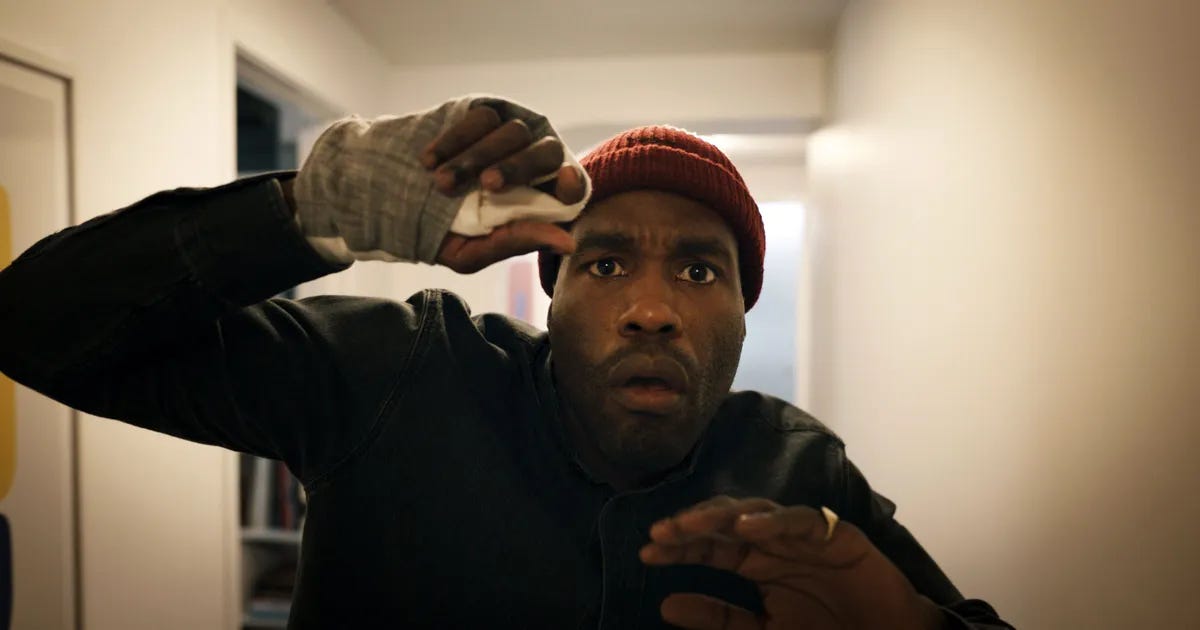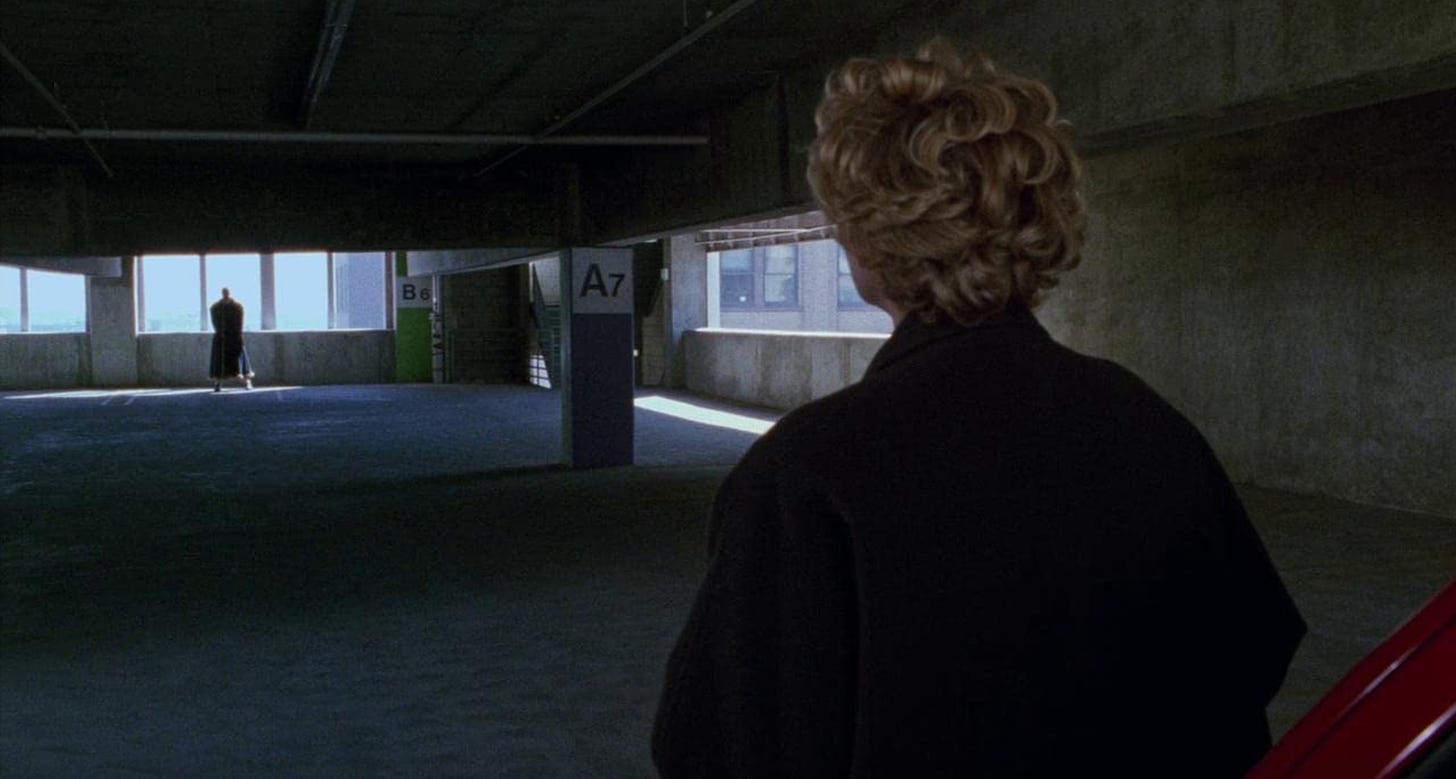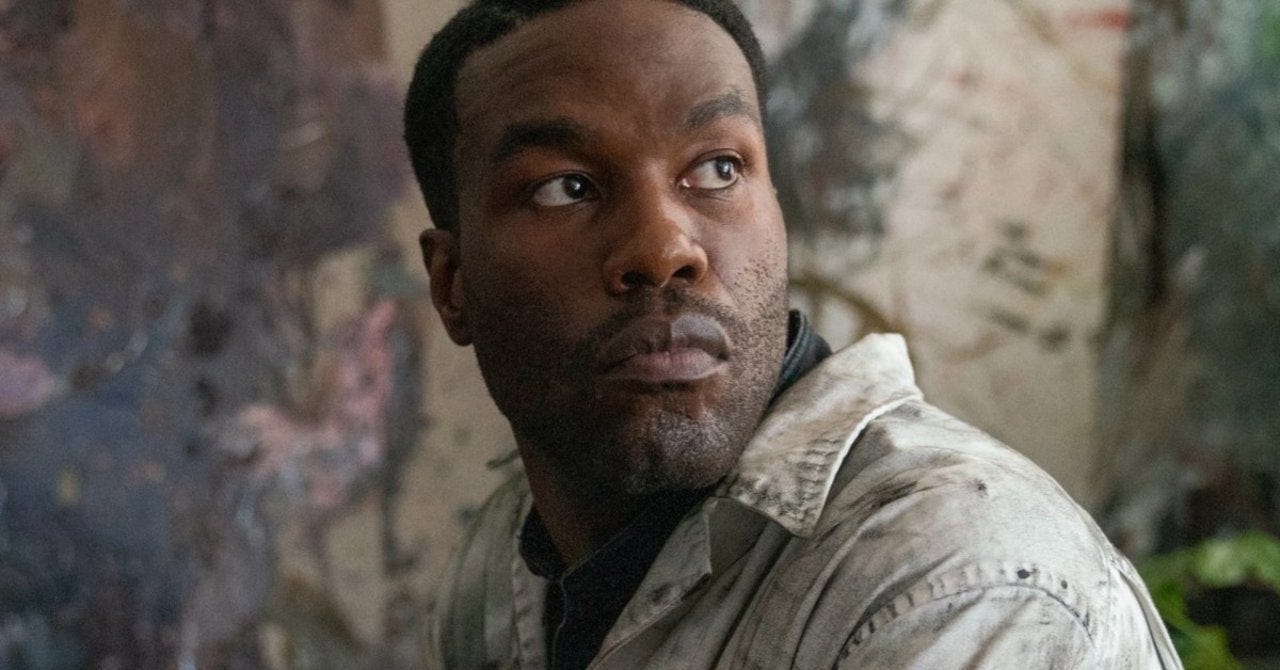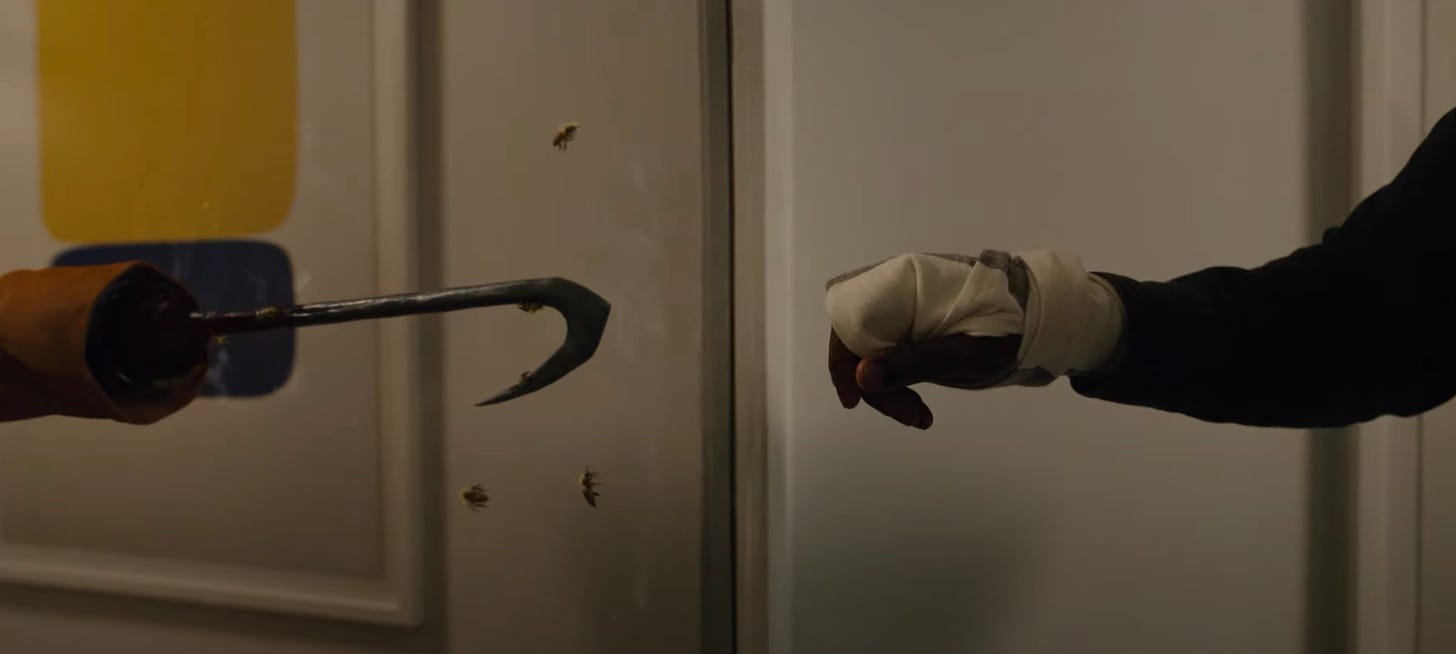review: Nia DaCosta’s Candyman is a shrewd, artful horror sequel
“Candyman is a way to deal with the fact that these things happened to us, are still happening!”
Hey hey, goin’ a bit off the usual script this week. Haven’t done a straight review of a new release on here before (I think the closest we ever got was our rapid-fire convo about Mank) but I saw the new Candyman over the weekend and for various reasons — chief among them my nagging sense of conflict with the calcifying critical consensus — I feel compelled to get my full two-cents out there in the ether.
Lemme start with how the movie made me feel. One of the recurring criticisms to come out of the initial press rush is that Candyman lacks effective “jump scare” moments. This is true, I guess, and the movie certainly departs from the visceral immediacy of the original Candyman’s creepy-crawly vibes. But it also has a sort of delayed unsettling effect, something I didn’t necessarily feel in the theater but hours later when my wife and I got home we just kinda sat there feeling creeped out as hell. Man I live to feel that shit from movies, ya know? Like, not necessarily a creepy feeling every time but something truly palpable that sticks in your craw, whether it be dread, hope, exhilaration, shock, or overwhelming curiosity.
Curiosity, incedentally, is the fuel that drives both the new Candyman and the 1992 original. Based on a short story by Hellraiser creator Clive Barker, the OG Candyman stars Virginia Madsen as Helen Lyle, a Chicago grad student working on a thesis about urban legends and modern folklore. Lyle’s research leads her to the Cabrini-Green housing project, where the legend of the Candyman (Tony Todd) — the spirit of a Black portrait artist from the 1800s who was killed by a lynch mob for having a child with a white woman — has grown into an ever present specter that haunts Cabrini-Green and may be responsible for a series of murders in the neighborhood. Lyle builds her thesis around the idea that Cabrini-Green residents are coping with their hardships through this urban legend, and shit hits the fan when she cavalierly summons Candyman by saying his name in the mirror five times, as the legend dictates.
Candyman is a late-stage triumph of the ‘80s slasher boom and a potent modern gothic genre remix. In centering a narrative about Black suffering in a white woman’s experience, the film’s political implications are anywhere from messy to problematic by today’s standards, but it’s also got some astute things to say about the exploitation of Black pain in white academia. Eleanore Studer does a great job summing this up in her Letterboxd review:
There's some interesting subtext lurking under this rather nutty plot about an arrogant white woman stomping in rambling about her thesis project, disrupting a black community she has no connection to, denying their history and mythos (and with that their suffering, which she knows absolutely nothing about), trying to twist them around to fit her own academic (and pointless) needs and preconceptions, and the ultimate, inevitable consequences of stealing the stories of a marginalized community that is not your own, particularly one that's been terrorized by so much violence.
For Black audiences, Richard Newby argues in the latest issue of Fangoria, there’s another truth to “lay claim to if we look at Candyman as the manifestation of Black pain and suffering, and its cyclical and institutional nature that is passed down through generations […] Candyman, as a Black nightmare, becomes a romantic dalliance with despair, not entirely different from Britain’s Dickensian romanticism of class inequalities.”
These are some of the ideas that director Nia DaCosta aptly weaves into her weird, unruly, beautiful tapestry of a sequel. I say sequel because that’s what the movie is, no matter how much the wonky marketing trends of the day dictate it be sold as a reboot/retcon/sequel hybrid. One of the things I think is tripping people up about this movie is the simple fact that it’s just called Candyman, which infers a very direct 1:1 “does it hold up to the original” comparison that sorta dooms the movie critically. It doesn’t help that Marvel movies have trained us all to care way too much about continuity within “shared universes” or whatever. So far most of the negative reviews of the film have framed it as a “reboot,” or “reimagining” as Angleica Jade Bastién put it in her scathing review for Vulture. Man I wish it could’ve just been called Candyman 4 or Candyman: Say My Name or some shit ‘cause on its own merits the movie fits comfortably in the tradition of such polarizing, artful, and inventive slasher sequels as A Nighmare on Elm Street 2: Freddy’s Revenge or Jason Goes to Hell: The Final Friday — movies where the director came in and really hijacked the franchise to put a distinct visual spin on it.
And DaCosta’s spin on Candyman is mad fuckin’ distinct. In her aforementioned review, Bastién calls Candyman “the most disappointing film of the year” because it illustrates the “artistic failures of an entire industry that seeks to commodify Blackness to embolden its bottom line.” Fair enough. I just think this film is more about all that than it is an example of it, and I think DaCosta’s eye is much keener than folks are giving her credit for. Almost everyone whose seen the film will admit it’s gorgeous to look at, but mere eye candy, Candyman ain’t. DaCosta paints a vivid portrait of Chicago as a haunted labyrinth paved over with a glossy sheen and cold distance that mirrors the suffocating effects of gentrification on American cities. It’s a far cry from the ‘90s grit, grime, and texture of the Chicago we see in the Cabrini-Green of the original Candyman, but again, that’s the point.
The same could be said of the film’s dialogue, which has also been thoroughly maligned for a perceived didacticism and soullessness. Before I even watched Candyman I caught multiple takes on Twitter and Letterboxd comparing it to the 2019 Netflix horror joint Velvet Buzzsaw. Another divisive piece, Dan Gilroy’s Bava-esque supernatural farce takes delightful, satirical aim at the banal upper crust of the LA art world with a biting tone of vapidity so uncanny the film itself has been accused (unfairly imo) of being as vapid as its subject.
Adopting a similarly dry-ass tone, Candyman is set in the upper crust art world of Chicago and comes on fairly strong with dialogue that, while shallow and maybe even wooden on the surface, reflects the way our internet-brained society has all but reduced human conversation to a series of tweetable slogans and virtue signals that keep us from digging deeper into real, pressing issues.
If there’s a major flaw with the film, it’s that the on-the-nose dialogue periodically clashes with the subliminal function of the visuals. There’s also the issue of heavy reliance on CGI, which may disappoint fans of Candyman ‘92’s practical viscera. But DaCosta never sits back and lets the CGI do the heavy lifting, nor does she merely rest on exposition. Her camerawork is far too omnipresent, mesmerizing, and active for that. Candyman pointedly takes place in 2019, a framing device that propels the film to capture, as I wrote in a plug for Velvet Buzzsaw last year, “the final days of an era that’s both in turmoil and somehow still more innocent than the apocalyptic days ahead, where the tumbling wave of culture breaks and sinks into the sands of greed.”
Candyman also recenters the franchise narrative with a Black protagonist, but one not immune to the pressures of commerce. Anthony McCoy (Yahya Abdul-Mateen II) is a visual artist whose work is only of interest to the white gatekeepers of his industry as long as it’s racially charged. As DaCosta explained in a recent interview, Anthony’s experience of being pigeonholed into commodifying Black trauma sums up the experience of being a Black filmmaker in Hollywood. She’s clearly taking the Brechtian approach here — emobdying cultural malignancies in order to call them out — a tall order for an American audience that time and again refuses to look itself in the proverbial mirror.
Anyway, Anthony’s search for the next commercial subject leads him to what’s left of the Cabrini-Green project. While there, he learns of the Candyman legend from local laundromat owner William Burke (Colman Domingo). Feeling the insatiable pull of inspiration, Anthony makes Candyman the subject of his next exhibit, which ultimately revives the legend and gets people sayin’ his name in the mirror again. Carnage ensues, Anthony goes further and further down the Candyman rabbit hole, and in the process, he discovers his connection to the myth is far more literal than he could have imagined.
This is where Candyman really digs into the lore, triggering a subliminal unfolding of what the film is really all about — transforming a symbol of Black despair into one of liberation. DaCosta’s Candyman is the penultimate disruptor of both literal and spiritual gentrification, a communal response to the violent soullessness of bloated, mutating, intergenerational white supremacy. As Burke puts it, “Candyman ain't a He. Candyman's the whole damn hive.”
The structure that the film takes on to reach its conclusion may feel messy and even overstuffed to some, but I think that’s mostly a side-effect of being confronted with a new director’s voice inside a perpetually misunderstood genre. “It could be argued, as some critics have, that Candyman doesn’t last long enough to savor all the various ideas it explores,” writes Richard Newby for THR, “but I’d argue it’s what we leave the film with, the conversations and analysis we bite into, the after-taste that makes it an essential piece of horror…”
As I mentioned up top, the whole reason I wrote this thing was because I’ve been so goddamn preoccupied with the haunting impression Candyman left on me. DaCosta has succesfully hijacked my eyes so when I look around my apartment, the walls seem to take on the shape and pulse of the cold, foreboding interiors of her film. It’s been days now and I’m still combing my movie-lizard brain for the lingering fractals of Candyman tryna figure out why I’m still so spooked and exhilarated by it. That’s horror movies, man … or rather, that’s Candyman … Candyman, Candyman, Candyman, Candym…
If you liked the post, please hit the heart button below // It helps us reach more readers on Substack // Also, tell a film-loving friend to subscribe //
Follow me on Twitter and Letterboxd // Read more of my writing: whoisandyandersen.com










